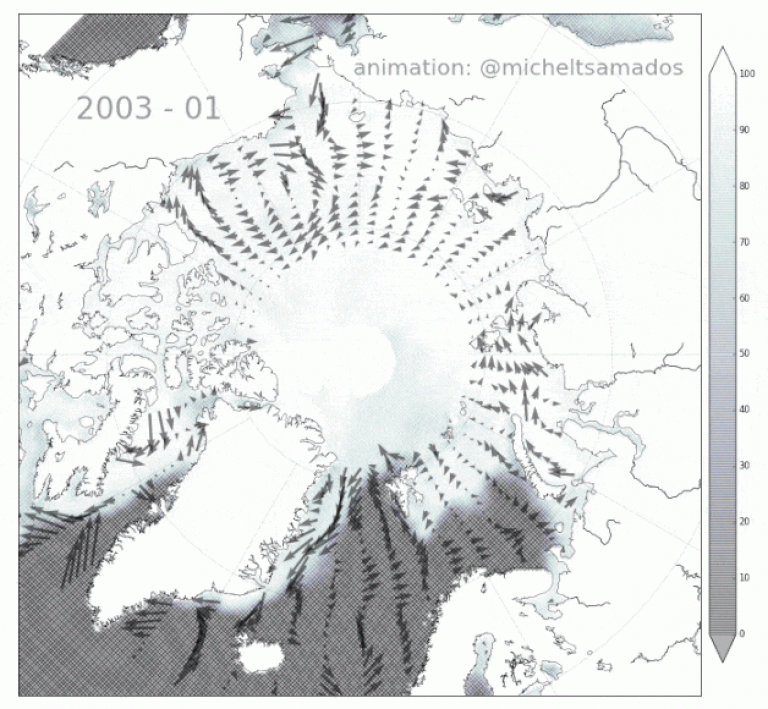Surface currents under Arctic sea ice detected from space
5 August 2017
Monitoring the surface circulation of the ice-covered Arctic Ocean is generally limited in space, time or both. We present a new 12-year record of geostrophic currents at monthly resolution in the ice-covered and ice-free Arctic Ocean derived from satellite radar altimetry and characterise their seasonal to decadal variability from 2003 to 2014, a period of rapid environmental change in the Arctic. Geostrophic currents around the Arctic basin increased in the late 2000s, with the largest increases observed in summer.

We find high eddy kinetic energy (EKE) congruent with features of the seafloor bathymetry that are greater in winter than summer, and estimates of EKE and eddy diffusivity in the Beaufort Sea are consistent with those predicted from theoretical considerations. The variability of Arctic Ocean geostrophic circulation highlights the interplay between seasonally variable atmospheric forcing and ice conditions, on a backdrop of long-term changes to the Arctic sea ice–ocean system. Studies point to various mechanisms influencing the observed increase in Arctic Ocean surface stress, and hence geostrophic currents, in the 2000s – e.g. decreased ice concentration/thickness, changing atmospheric forcing, changing ice pack morphology.
Michel Tsamados (UCL Earth Sciences/Centre for Polar and Modelling) is co-author of a paper in the journal "The Cryosphere" published on 26 July 2017. This work was lead by Thomas Armitage his former PhD student and Research Associate at UCL Earth Sciences/Centre for Polar and Modelling.
Follow Michel Tsamados on Twitter@micheltsamados
 Close
Close

